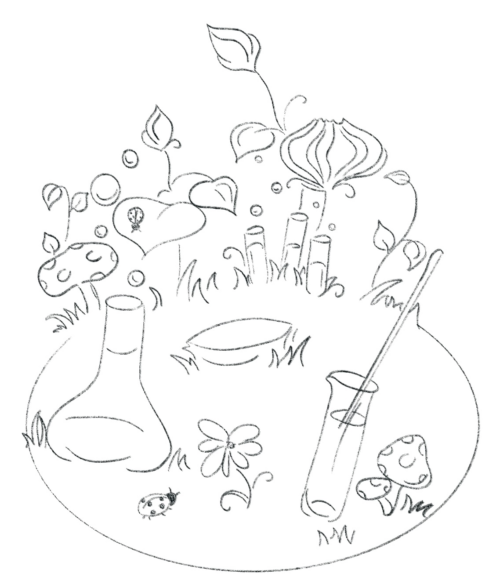I sat down for a typical lunch at Annenberg. “So, what classes are you taking?” my table-mate asked, a classic conversation starter.
“I’m taking a History of Science class, a Gen Ed on heart disease, and LS1a,” I responded, thinking about the work cut out for me later.
“OMG, are you also a pre-med?” they questioned, recognizing our shared interest in STEM and looking for reassurance.
“Hahaha…as of right now? Yes. But check back in a year,” I answered half-jokingly, like hundreds of other first-years on campus. We’re all aware that people often get “weeded out” by the notoriously difficult CHEM 17: Principles of Organic Chemistry or drawn away by the allure of Wall Street. Yet there are those who persevere through the difficult classes and resist the temptation of alternative paths, determined to see the pre-med track through.
Luke Lawson ’26, a biomedical engineering concentrator at the College, has known that he wanted to pursue medicine since early in his high school career. In an interview with the Independent, Lawson explained, “I thought medicine was a very good way to put my efforts and use my intelligence in school to then develop it into something very clear that helps people.”
But there are also many students who choose to leave the pre-med track behind. “I think the draw of money is a big one for econ away from pre-med,” commented Lawson. The time commitment is no joke either: from four years of undergraduate education to four more years of medical school, and then three to seven years of residency—who knows when life is expected to actually begin?
Speaking on behalf of his peers, Lawson relayed the dilemma that many students face. “[They think], ‘Wait a minute, there are so many other jobs that I could be making equal or more money in, that I could get a year out of college or two months after I graduate.’” When asked about what alternative careers his peers have been turning to, he said, “The big one is going to some sort of econ-finance industry job, like investment banking, venture capital, private equity, things like that.” Lawson observed that regardless of the path others choose, each one leads to some form of success.
“I’ve had a couple friends who, for their summers, they’re going and working for Bank of America or Goldman Sachs, or some financial big tech or big company, and they come out of the summer making 30k,” he explained. “Meanwhile, the pre-med kids are doing the PRISE program for research over the summer, where the exciting thing is you get free housing, and you work 40 hours a week for 10 weeks. And at the end of the summer, you get a 3k stipend.”
There are many components of the life sciences that can draw students toward a STEM concentration, beyond just the pre-med track. “Among other things, science concentrators are learning how to test hypotheses, synthesize large amounts of information, and explain complex concepts,” commented Deb Carroll, the Interim Director at the Mignone Center for Career Success (MCS).
Carroll elaborated that through internships, research, classes, or other extracurricular experiences, students can learn what they like beyond the conventional pre-med track. For example, many students find the opportunity to do research in different labs throughout their time at Harvard.
Lawson explained that through these experiences, students figure out if they “can see themselves doing biological research for either academia, which is strictly for the purpose of figuring things out for just the sake of knowledge, or for the industry, where you would go work for a pharmaceutical company…for the purposes of developing something that will be commercialized and then sold for profit.”
Despite the career paths outlined by Lawson and Carroll, such as medical school or medical research, some pursuing a classic “pre-med” concentration often find themselves at a crossroads. A Harvard alumna who wished to remain anonymous studied Integrative Biology at the College, and admitted that she frequently felt like the only person in her biology classes who did not intend on pursuing a doctorate. Although she loved the intellectual challenge that biology presented, she believed a career in finance and business suited her entrepreneurial personality better. This alumna secured her post-graduate job in her sophomore year of college, and now, she continues to work in investment banking.
“Even today, I don’t really know how to reconcile those two things,” she commented. “Should I do life science investing? Should I try to do something in AI and biology?”
Her advice for undergraduates is to explore both the academic and career possibilities during college. She believes it is worth it for students to study something that excites them, regardless of whether it aligns with future career prospects. “Even for students interested in medicine, nearly 80% will not apply to medical school until they are alumni and have had one or more years of work, study, research, or other experience,” Carroll emphasized.
And for the students who don’t know where to start, MCS provides a vast range of resources. “No matter what a student chooses to study, we have career advisors who work with students interested in careers in a wide variety of industries, [such as] biotechnology and pharmaceuticals, global health, and environmental careers.”
Just as there are many types of pre-med students, there are also many types of life sciences students. The best way to discover what “type” of pre-med (or non-pre-med) student you want to be is to explore.
Raina Wang ’28 (rainawang@college.harvard.edu) is currently having a crisis about her own identity as a non-STEM pre-med student.

